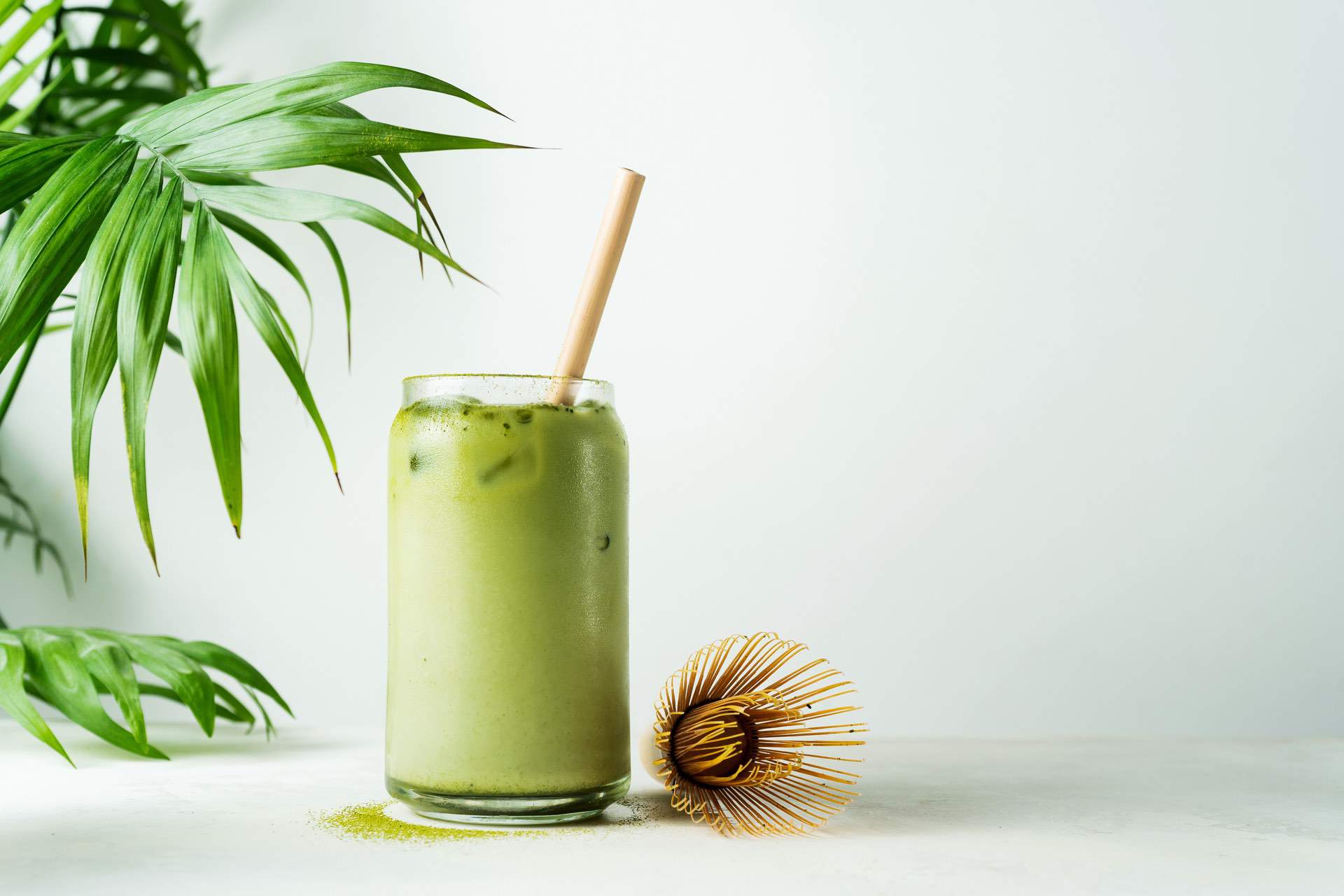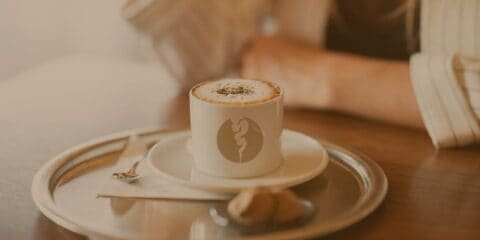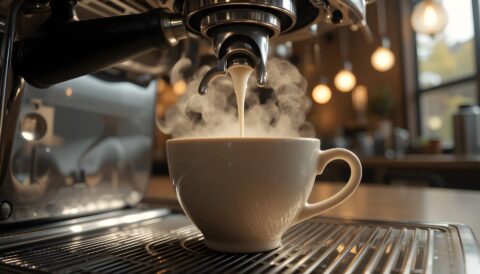There's something exciting going on in the world of tea right now, with one trend growing ever stronger. Over the past year, matcha latte has dominated searches - especially in the US but also here in Sweden. Searches have increased so rapidly that many of Stockholm's cafés have barely had time to catch up with the trend.
Meanwhile, 'dirty matcha' - a rebellious variant that combines espresso and matcha - has already started to steal the limelight. So what's the deal with matcha and its "dirty" combo that's slowly making its way into Stockholm's cafés? We explore the question in today's post.
What is Matcha latte?
Matcha is a vibrant green powder made from finely ground green tea leaves originating in Japan, which has now been rediscovered by coffee enthusiasts worldwide. Matcha latte has a unique, slightly sweet and grassy flavor that is perfectly balanced with smooth, steamed milk.
The classic matcha latte, whipped with steamed milk, has now been joined by its more robust variant called "dirty matcha".
What is 'Dirty' Matcha?
An exciting latte variant that combines matcha and espresso. The intensity of the espresso shot in a dirty matcha balances the mild sweetness of the matcha, creating a fascinating taste experience that both coffee and tea lovers can appreciate.
How to make matcha latte?
There are several different varieties of matcha latte and you can find many great recipes online. Iced matcha latte is perfect for a hot summer day, dirty matcha is for when you want to spice things up a bit, and the classic version is always a safe bet.
Our simple basic recipe:
- Whisk 1-2 tsp matcha powder with a little warm (not boiling) water to a smooth paste
- Pour in steamed milk (or plant-based milk of your choice)
- Top with some extra matcha powder for a nice finish
Frequently asked questions about the health benefits of matches
Now that matcha is becoming a part of many people's daily routine, questions about its calories, health benefits and how it fits into our lifestyles are popping up. Here are answers to the most common questions.
Is Matcha high in calories?
The good news is that pure matcha powder is almost calorie-free. One teaspoon (about 2 grams) contains about 5-10 calories. But as soon as you combine the matcha with milk, sweetener or (God forbid) sugary syrup, the calories will skyrocket. It is estimated that a "Grande" matcha latte from a regular coffee chain contains over 200 calories thanks to the standard sugary blend. Our tip is to order your matcha latte unsweetened, or better yet - whip it at home with almond milk and a small drizzle of honey for natural sweetness.
Does Matcha contain caffeine?
Yes, matcha contains caffeine - around 30 mg per cup, which is less than in coffee. It gives you energy without the typical coffee "crash" afterwards.
Is Matcha dehydrating?
No, although matcha contains caffeine, it is still mostly water. Unless you embark on a matcha marathon of 10 cups a day, it won't dehydrate you.Tips from the tea masters: Pair your matcha with a glass of water if you are sensitive to caffeine.
Is Matcha good for weight loss?
Ah, the golden question. Matcha can help, but it's no magic potion. Here's why:EGCG, a powerful antioxidant in matcha, can boost metabolism (studies show a modest increase in fat burning). Plus, its caffeine content combined with L-theanine provides crash-free energy, making it easier to skip the afternoon sweet tooth.
Is Matcha good for your liver?
The science says yes. Research links matcha to lower liver enzyme levels (a marker of liver stress) and even reduced risk of fatty liver disease. The antioxidants act like little bodyguards, fighting inflammation and oxidative damage.Important to remember: If you have liver problems, don't self-medicate with matcha - talk to your doctor first.
Is Matcha safe for breastfeeding?
Short answer: Yes, but in moderation. The caffeine content in matcha is lower than in coffee, but it still passes into breast milk. A good rule of thumb is to stick to 1-2 cups a day and avoid drinking it just before breastfeeding. When in doubt, always ask your pediatrician.
Find Matcha latte in Stockholm
Here are some of our favorite places in Stockholm where you can enjoy a perfect matcha latte:
- Cafe koya: A cozy Japanese-inspired café in Södermalm where matchan is traditionally prepared with bamboo whisk. Perfect for those who want to experience matchan in its true element.
- Matcha ya: Sweden's first matcha bar specializing entirely in matcha drinks. Their baristas are experts in matcha and offer several exciting varieties.
- Guest cafe: A charming café in Vasastan focusing on quality coffee but also serving an excellent matcha latte. Great place to try dirty matcha!
- Yi Fang fruit tea: For those who like Asian tea drinks. Here you can taste their iced matcha latte with different toppings.
- YEU Bake shop: A small but cozy café that combines French pastries with Asian flavors, including a delicious matcha latte that goes perfectly with their matcha-inspired pastries.
The myth debunked
Matcha may not be an outright superhero, but it's not far off. It's low in calories, moisturizing and full of health benefits - especially if you skip the sugar bombs that many coffee chains add.
And that "dirty matcha" trend? It's actually worth trying! The combination of espresso and matcha is strangely delicious and gives you the best of both worlds.
We hope this blog has answered your questions about matcha. Have you tried matcha latte yet? Or maybe dirty matcha? Feel free to tell us about your experiences in the comments section below - are you more of a matcha fan or do you stick to your regular coffee?



